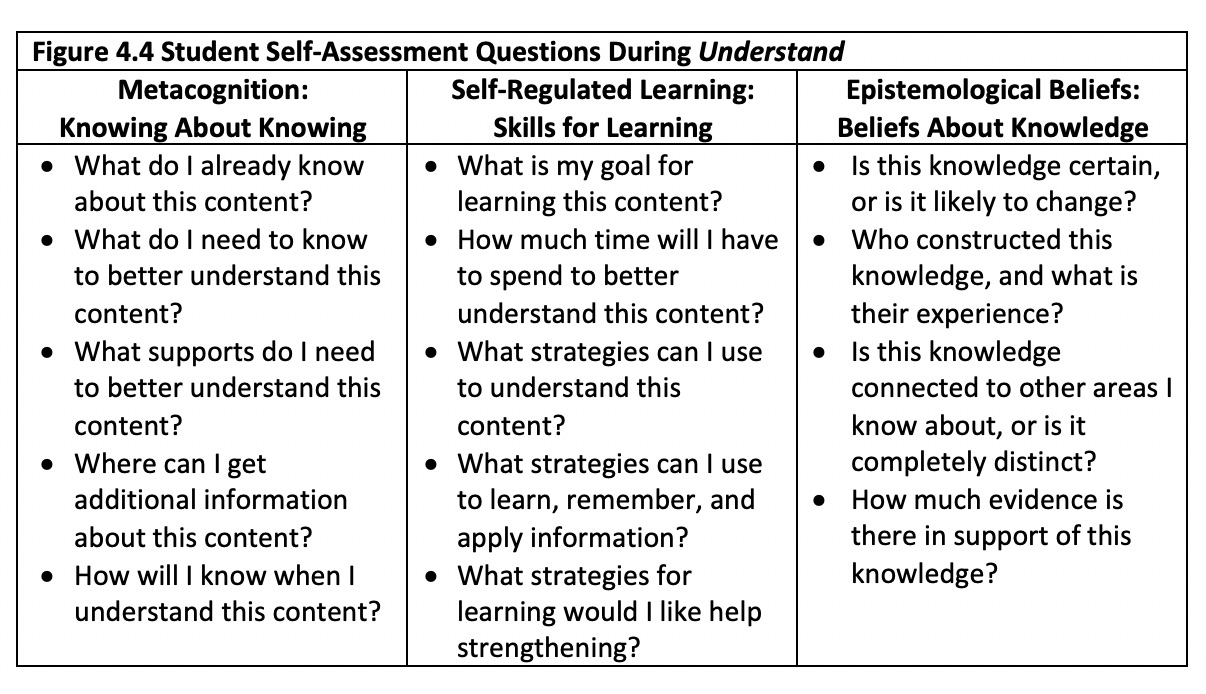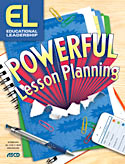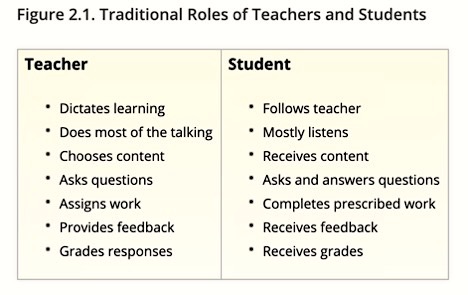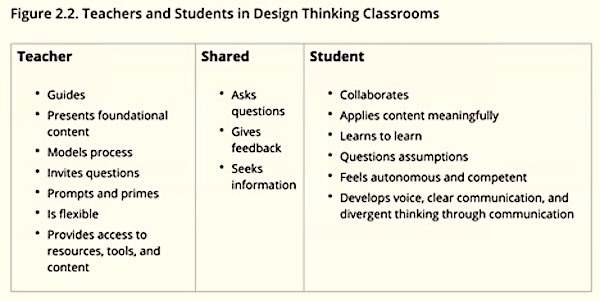 Watching my children grow up, I became intrigued by their love of videogames. They would literally spend hours analyzing each game and the next steps needed to move up a level. They conferred with friends and when they made a mistake, they received instant feedback and could adjust their moves accordingly.
Watching my children grow up, I became intrigued by their love of videogames. They would literally spend hours analyzing each game and the next steps needed to move up a level. They conferred with friends and when they made a mistake, they received instant feedback and could adjust their moves accordingly.
I wondered then, why can’t school be more like that? Looking back now, I’d say we’re moving in the right direction to engage students in active, high-level learning, but we’re not there yet.
Compare and contrasts these two figures to both celebrate our progress and encourage ourselves and others to continue to move more toward meaningful and powerful student learning.
The awareness-raising that’s involved in perusing these two charts explains why I enjoyed reading Designed to Learn: Using Design Thinking to Bring Purpose and Passion to the Classroom by Lindsay Portnoy. Dr. Portnoy is a former classroom teacher turned cognitive scientist and associate teaching professor at Northeastern University’s Graduate School of Education. In that role, she regularly works with schools and shares her passion for design learning and curriculum integration.
 This short book (158 pages) offers a guide to educators about how to better engage students so they both see the relevance in what they are learning and so the learning sticks with/to them. It is an excellent companion book complementing our guiding texts in the Powerful Conversations Network: Powerful Task Design: Rigorous and Engaging Tasks to Level Up Instruction by John Antonetti and Terri Stice; Ron Berger’s Leaders of Their Own Learning; and Fisher, Frey, and Smith’s All Learning is Social and Emotional.
This short book (158 pages) offers a guide to educators about how to better engage students so they both see the relevance in what they are learning and so the learning sticks with/to them. It is an excellent companion book complementing our guiding texts in the Powerful Conversations Network: Powerful Task Design: Rigorous and Engaging Tasks to Level Up Instruction by John Antonetti and Terri Stice; Ron Berger’s Leaders of Their Own Learning; and Fisher, Frey, and Smith’s All Learning is Social and Emotional.
Five Elements of Design Thinking
According to Portnoy, there are five elements of design thinking:
❖ Understand and Empathize where students begin to hone in on something they are learning that resonates. This element connects to social and emotional learning as students are encouraged to listen and seek to understand their peers’ different points of view. Portnoy suggests when “students work to consider the needs of others, they broaden their worldview, step outside themselves, and learn to observe and listen to others” (p. 16).

❖ Identify and Research moves students into greater specificity by thinking about the problem or challenge they want to address and determining the root cause. The research stage promotes metacognition and student agency by requiring students to identify needed resources and possible challenges.
❖ Communicate to Ideate helps students broaden the “soft skills” of listening, paraphrasing, questioning, and dialogue. While every stage requires teachers to be active supporters of student learning, teacher feedback at this stage is particularly critical to help students reflect and think critically.
❖ Prototype and Test moves students from thinking about the problem and possible solutions to identifying one specific solution for deeper study and testing. Students “flesh out all the variables necessary to develop and build it. They must demonstrate deep content knowledge to ensure their prototype meets the needs” for which it is intended (p. 17). Testing the prototype and evaluating its effectiveness is a key part of this element.
❖ Iterate and Reflect expects students to use feedback gained from their work on the solution/prototype through self-and-peer assessment. Students then use the feedback to make revisions to their original design and to reflect on what was most successful and what still needs attention.
https://twitter.com/lportnoy/status/1214943381987700739
9 Chapters Chocked Full of Resources
The book is organized into nine chapters. The first three chapters make the case for design thinking. (Read the Introduction and Chapter One here.) Chapter One shares an intriguing “story from the field” about Paula Dillon, the assistant superintendent for learning of the Barrington (Rhode Island) Schools who decided to experiment with the design thinking ideas.
A particularly useful section in chapter three addresses how to shift parts of the existing curriculum to design thinking without “recreating the wheel.” Chapters four through eight are devoted to design thinking’s five elements: one chapter per element. And, the conclusion builds the case for trying design thinking.
Each of the “element” chapters offers ideas for developing learning targets/objectives and ongoing checks for understanding/formative assessments. The author provides a wide variety of types of checks for understanding that fit the particular element under consideration. The chapters also contain suggested teacher and student questions.
Student Self-Assessment Tools
I found the student self-assessment questions in chapters four through eight to be particularly useful. The questions are organized around three important learning lenses: metacognition, self-regulation, and epistemological beliefs (how your beliefs about knowledge change as you learn more). As an example, the student self-assessment questions for the first element, Understand and Empathize, are listed in this chart (p. 71):
 One Caveat: Summative Assessment
One Caveat: Summative Assessment
As schools move closer to standards-based grading and “mastery,” design thinking will be more easily accepted and used. While Portnoy at times mentions summative assessments, she does so in a very general way. I have no doubt that a group of teachers interested in design thinking can develop rubrics or procedures for providing a grade or a scale for determining mastery.
Classroom Stories Abound
Throughout the book, the author provides stories about the design thinking projects students created, ranging from making mythology come to life by asking kids to research a specific character and develop a prototype and marketing plan, to studying their community’s air quality and creating a plan to promote planting more trees in key areas.
In every case, students are in the center of the design, and they are learning in engaging ways…much like my children learned when they played videogames.
https://twitter.com/lportnoy/status/1215271301587382272
Most important, Lindsay Portnoy writes, as the students explored their prototypes, the relevance of what they were learning and why was front and center.
Her encouraging book provides a guide to teachers who want to remain faithful to standards-based learning, while at the same time doing it in a way that assures students are highly engaged and active learners.
Other resources:
 ASCD study guide for Using Design Thinking to Bring Purpose and Passion to the Classroom.
ASCD study guide for Using Design Thinking to Bring Purpose and Passion to the Classroom.
ABPC post: “Tap a Rich Vein of Resources.” My review of Educational Leadership’s October 2016 issue Powerful Lesson Planning.



0 Comments on "How We Can Teach Our Students to Become Design Thinkers"